When Hippocrates sat under the plane tree in Kos’s town square, expounding his theories of healing, I wonder if he knew that many millennia later he would be known as ‘the father of modern medicine’ and people would still flock to Kos to stand under that old tree where the fabled physician once sat to teach. Many of the methods of modern medicine are based on Hippocrates’ writings, and doctors today still take the “Hippocratic Oath”.
I was visiting Kos‘s central plateia enjoying the shade of an ancient, gnarled tree, its wide spreading branches propped up by pieces of aged marble. It is said to be 500 years old, a distant offshoot of the original where Hippocrates used to sit. Underneath is a purification fountain made from an antique sarcophagus, used by the Byzantine Turks to wash themselves before entering the mosque which was built in the same square.
Kos, the second largest island in the Dodecanses, is 5 km from Bodrum on the Turkish coast. It was the birthplace of the physician Hippocrates, who like the tree, lived to a venerable age. It is known for its hot springs, orange groves, vineyards and resplendent gardens, and has given a name to a variety of lettuce introduced from its shores. Kos is a pretty little port town, with tidy streets and many new and old Venetian style buildings of elegant design. The castle of the Knights of St John, built by the Venetians in 1450, dominates the harbor with its high stone walls. Yachts and charter boats crowd the harbour, many offering excursions to nearby islands or Turkey.
I set off sightseeing on a little motorized train that chugs around past various archaeological sites of Greek, Roman and Byzantine eras, then heads the 4 kms out of town to the Asklepeion. The train motors up a pine covered mountain slope along an avenue of cypresses. The Asklepeion is one of the most important holy places of ancient times. Located in a magnificent setting on a hillside with a view of the distant sea amid a grove of cypress trees, the site is built on three tiers which enclose temples, baths, a medical school, museum, and housing for priests and patients. The sanctuary and school of medicine made Kos famous all over the ancient world.
Hippocrates was born in 460 BC, and died in 357 BC. His fame resulted from a collection of 80 medical works known as The Hippocratic Corpus which challenged the methods of physicians who used magic and oracles to treat diseases. Hippocrates believed that disease had natural causes and could be studied and possibly cured according to the workings of nature. At Kos, patients underwent positive treatment as taught to physicians by Hippocrates. The Hippocratic Oath is the most important of all his writings and established him as the leading medical inspiration of all ages.
The Asklepeion was built after Hippocrates’ death but students came here to learn his methods of healing. It was the most famous hospital of its time, consisting of a religious sanctuary, a healing centre, school of medicine and many mineral springs where people came to bathe. On the top tier was a large Doric temple to Asklepios, the God of healing, occupied by a hereditary order of priests who guarded the secrets of medicine. In the early Christian period a church was built over the site so all that remains of the temple is a capital which was used as an altar. Much of the temple structure was quarried by the Knights of St. John of Jerusalem to be used in the construction of the medieval castle and walls seen in the town.
I spent a pleasant afternoon climbing the stairways to explore the porticoes and ruined buildings. There is a magnificent view of the red-tiled rooftops of the town below and the teal-coloured sea, which stretches eastward toward the shores of Turkey. The air is fragrant with scent of herbs, cooled by the sea-breeze. The serenity of the setting leaves me refreshed and calm. It was easy to see how this popular sanctuary was the perfect place for recuperating patients and how it became the most famous hospital in antiquity.
IF YOU GO
- Air: Daily flights from Athens.
- Ferry: Kos is connected with all the islands of the Dodecanese and the ports of Thessaloniki and Pireaus.
- Ferry/International: Daily sailings in summer to Bodrum, Turkey
- Accommodations: There are pensions and hotels near the port. Camping Kos is 3 kms east of the town. http://www.kosexplorer.com/
- The Asklepeion: Open 8.30 – 6 Tuesday – Sunday (2.40 Euros.) The little tram goes from the main square by the port. Frequent buses run to this site but it’s pleasant to cycle or walk there as well.
Written by and photos by W. Ruth Kozak for EuropeUpClose.com

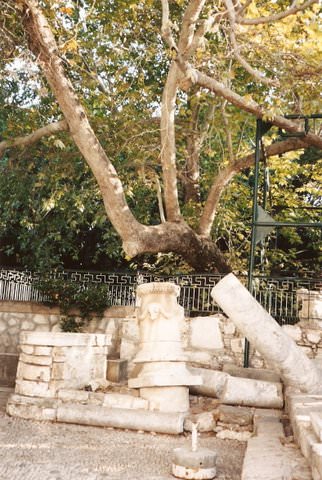
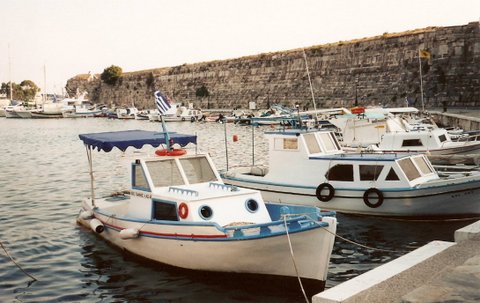
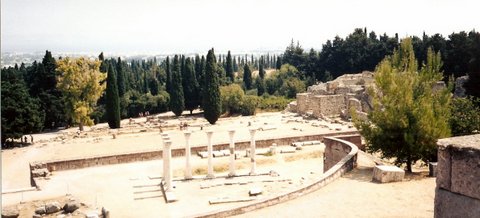

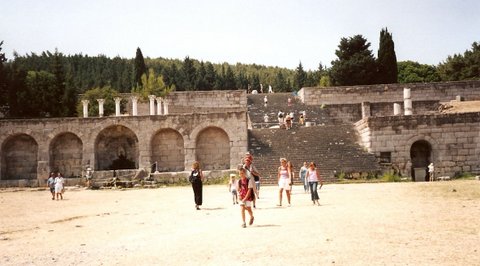
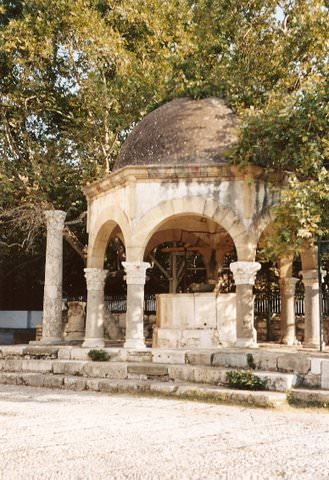
Sculpture Blog
Friday 18th of July 2014
About The Hippocrates Of Kos Father
[...] ier was a large Doric temple to Asklepios, the God of healing, occupied by a her [...]